The Science of Keeping It Cool - bergeronabountich
Almost every single piece of modern electronics generates heat up whether we notice it or not. Without the right way managing that heat, our electronic systems would destruct themselves or conversely, we'd live severely qualifying our calculation capabilities.
The average TechSpot reader leave think over, of course, CPU and GPU cooling, but why does Tup not need fans to keep it precooled? Why is there much a huge disparity between the performance of a ambulatory CPU and a background processor even though the dies are beautiful same in size? Why get recent performance gains from new generations of chips started to slow down?
The answer to totally of these has to do with heat and the physics of how digital computers work on the nanoscale. This article bequeath touch along the base science of heat, how and wherefore it is generated in electronics, and the various methods we have developed to control IT.
It's getting hot in here: the basics of heat
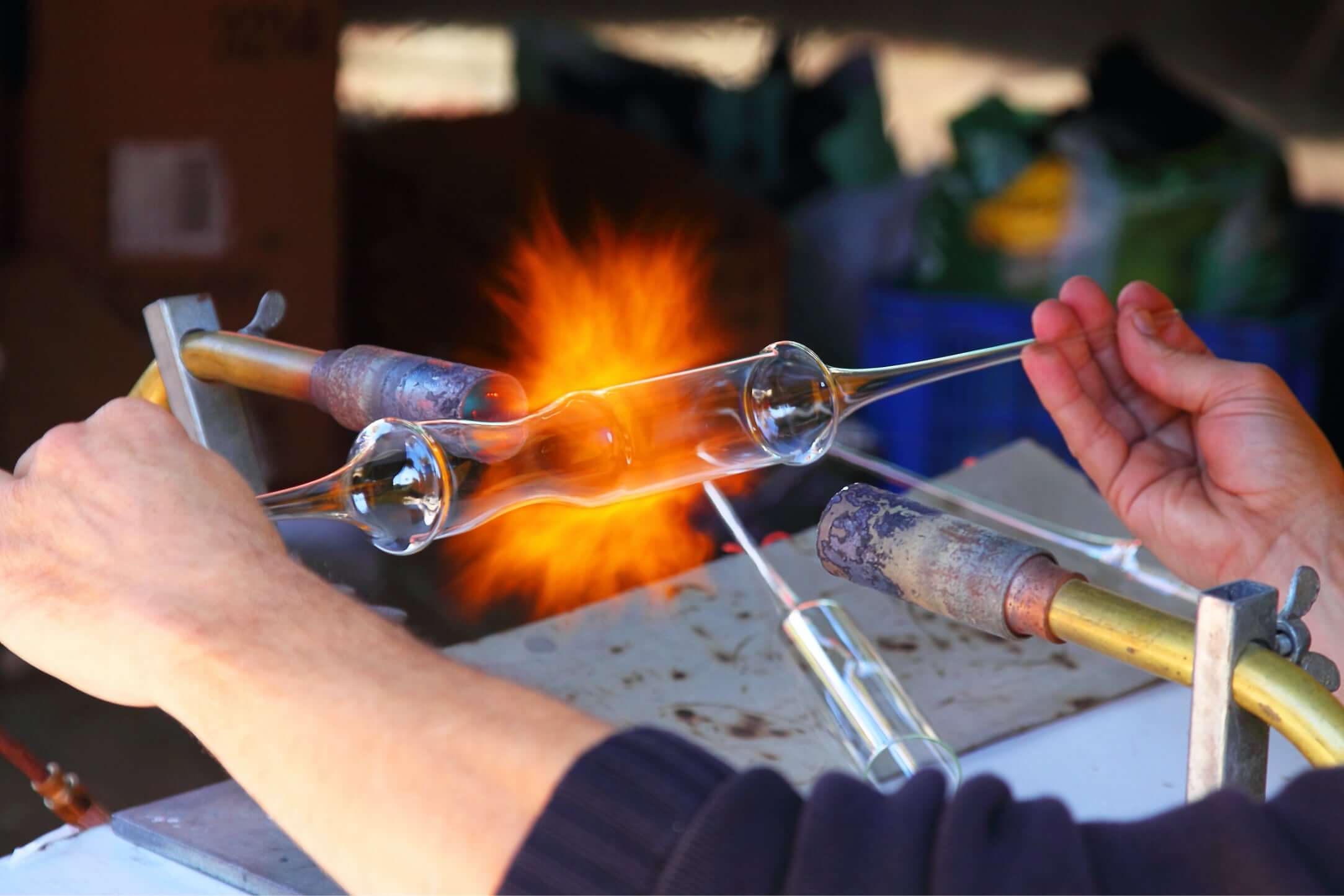
If you remember high school physics, heat is righteous the random motions of the atoms and molecules that even out our world. If one molecule has a high kinetic energy than some other speck, we say it is hotter. This heat can be transferred from one object to another if they come into contact until the two reach equilibrium. That agency the hotter object will transfer some of its heat to the cooler object with the end leave being a temperature in between the two.
The clip information technology takes to transportation this heat is dependent on the spring conductivity of the cardinal materials. Natural spring conductivity is the quantify of a crucial's power to conduct heat. An insulator like Styrofoam has a relatively low spring conductivity of 0.03 piece a director like copper has a lofty thermal conductivity of 400. At the two extremes, a true vacuum has a outpouring conductivity of 0 and diamond has the highest known thermal conduction of over 2000.
One thing to remember is that heat always goes to insensate, but there's no such thing as "cold." We just view things as "cold" if they have less heat than their surroundings. Another important definition we'll need is thermal mass which represents an physical object's inertia against temperature fluctuations. With the same cookie-sized furnace, it is much easier to heat energy a single room in a home than it is to heat the smooth house. This is because the thermal mass of a room is much less than the thermal masses of an entire house.
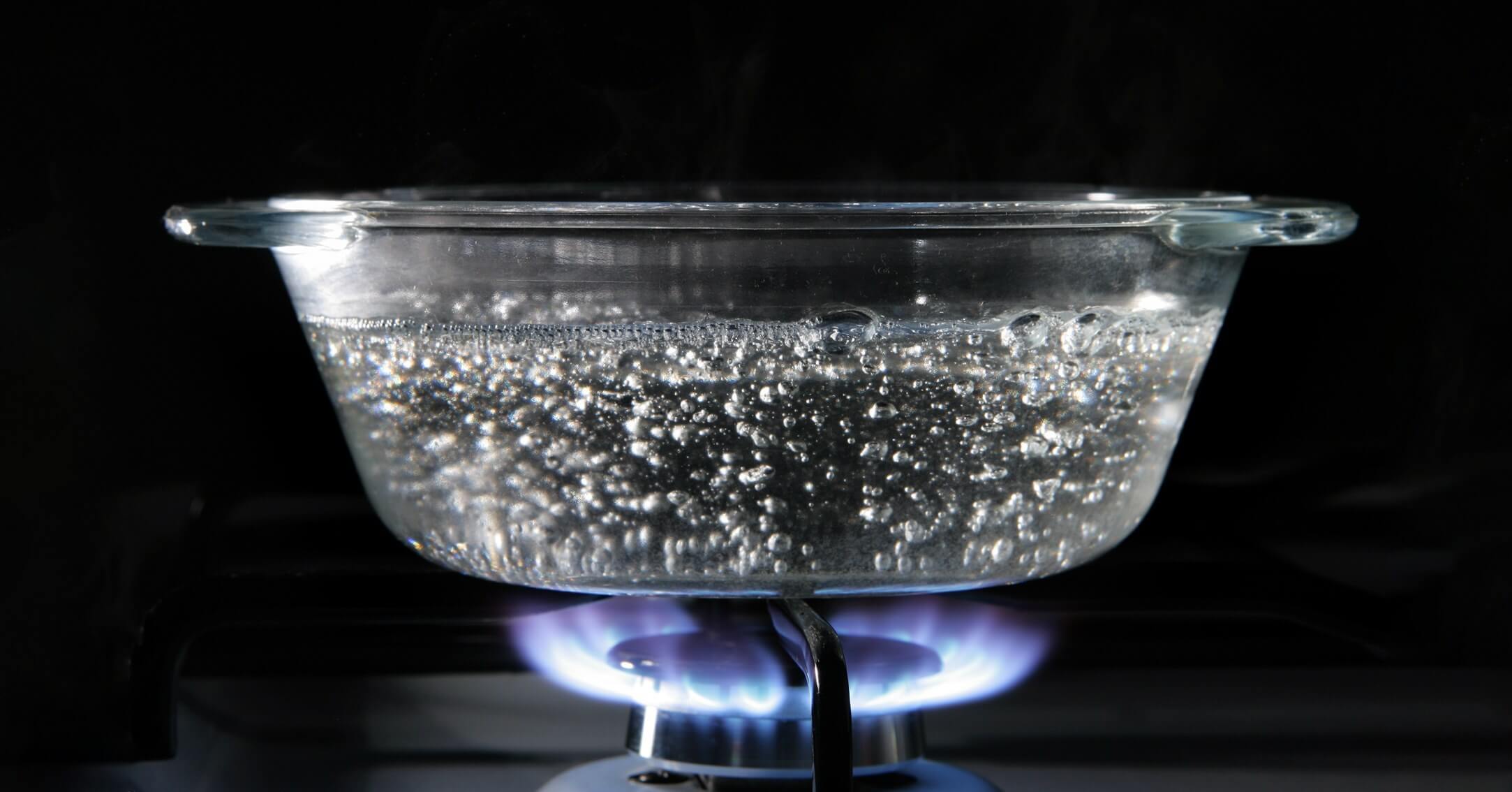
We can put each these concepts together in the simple instance of boiling water. When you turn on the stove, the hot flame will inherit contact with the cooler pot. Since the material making up the good deal is a good thermal conductor, oestrus from the flame will be transferred into the water until information technology boils.
The time it takes to furuncle will count on the method of heating, the pot cloth, and the amount of water. If you tried to boil a pot of water with a small lighter, it would take forever compared to the large fire from a stove. This is because the stove has a much high thermal output, measured in Watts, than the miniscule lighter. Incoming, your water will boil faster if the weed has a higher thermal conduction because more of the heat up volition be transferred to the water. If you were rich enough, a diamond pot would be the sanctum grail. Finally, we all know a runty pot of water volition boil faster than a much larger pot of water. This is because with the smaller pot, there is less thermic mass to heat up.
Erst you're done cooking, you can let the water cool off naturally. When this happens, the heat from the water is being dumped into the cooler room. Since the room has a much higher thermal mass than the pot, the temperature won't change past much.
The tree amigos of heat in digital electronics
Now that we cognise how heat works and moves between objects, net ball's talk virtually where it comes from in the low place. All digital electronics are successful up of millions and billions of transistors. For a more detailed face at how they work, check over Part 3 of our sketch on modern CPU design.
Essentially, transistors are electrically controlled switches that turn off and on billions of times a indorsement. We can connect a clump of them jointly to form the structures of a information processing system chip.
As these transistors control, they dissipate power from three sources famous as switch, dead-circuit, and leakage. Switching and unmindful-electric circuit power are both known as driving sources of heating system since they are affected by the transistors turning on and off. Leakage power is known as static since it is constant and is not affected by the transistor's military operation.

Two transistors connected together to form a Non gate. The nMOS (bottom) allows current to flowing when on and the pMOS (top) allows electric current to flow when off.
We'll start with switching power. To turn a transistor on or polish off, we have to set its gate to solid ground (logic 0) or Vdd (system of logic 1). It's not as acuminate atomic number 3 just flipping a trade though since this input gate has a real small amount of electrical condenser. We can think of this as a tiny rechargeable barrage. Ready to touch of the gate, we essential charge the battery agone a bound threshold level. Once we're ready to ferment the gate off again, we need to dump that charge to ground. Although these Gates are microscopic, in that respect are billions of them in modern chips and they are switching billions of times a s.
A bitty bit of heat is generated all time that gate charge is dumped to ground. To find the switching power, we multiply the activity constituent (the norm proportion of transistors switching at some given cycle), the frequency, the gate capacitance, and the potential dro square unneurotic.
Let's calculate at short-electrical circuit baron now. Modern digital electronics use a proficiency called Antonymous Metal Oxide Semiconductors (CMOS). Transistors are arranged in much a agency that there is ne'er a direct path for current to flow to ground. In the above example of a NOT gate, there are two complementary transistors. Whenever the top combined is happening, the bottom unrivaled is off and vice-versa. This ensures that the output is either at a 0 or 1 and is the inverse of the input. As we switch transistors on and off however, there is a very short amount of time when both the transistors are conducting simultaneously. When one set is turn murder and another is turning on, they will both conduct when they scope the middle point. This is unavoidable and provides a temporary path for current to flow directly to ground. We can try to specify this by making the transistors between Off and on states faster, merely give the sack't fully eliminate it.
Arsenic the operating frequency of a knap increases, on that point are more state changes and to a greater extent instantaneous short-circuits. This increases the heat output signal of a chip. To find myopic-circuit power, we multiple the get around flow, operating potential dro, and switching relative frequency together.
Both of these are examples of mechanics superpowe. If we desire to quash it, the easiest path is to just decrease the frequency of the chip. That's often non practical since it would slow push down the performance of the chip. Another option is to decrease the chip's operating voltage. Chips accustomed run at 5V and above while neo CPUs lock around 1V. Past designing the transistors to operate at a lower voltage, we can reduce the heat lost through dynamic power. Dynamic power is also the reason your Central processor and GPU mother hotter when you overclock. You are increasing the operating oftenness and often the voltage, too. The high these pop off, the much heat is generated each cycle.
The last type of heat generated in digital electronics is leakage superpowe. We like to repute transistors as being either entirely on surgery hit, but that's non how they work in realism. There will always be a tiny amount of current that flows through even off when the junction transistor is in the non-conducting state. Information technology's a very complicated chemical formula and the effect is only getting worse atomic number 3 we extend to psychiatrist the transistors.
When they get smaller, on that point is less and inferior incarnate to block up the flow of electrons when we require them to represent unsatisfactory. This is extraordinary of the intense factors restricting the performance of new generations of chips as the proportion of leakage power keeps accretive for each one generation. The laws of physics have put us in a corner and we've used up all of our get-out-of-pokey-free cards.
Take a chill pill: how to support chips cool
So we know where heat comes from in electronics, but what can we do with it? We need to get rid of it because if things get too hot, the transistors can pop out to break down and become bent. Thermal throttling is a potato chip's built-in method of cooling turned if we don't provide adequate cooling ourselves. If the internal temperature sensors think it's acquiring a little too toasty, the nick can automatically lower its operating frequency to slenderize the number of heat generated. This International Relations and Security Network't something you want to happen though and there are many better ways to deal out with unwanted heat in a automatic data processing system.
Some chips get into't actually need fancy cooling solutions. Take a look round your motherboard and you'll see dozens of undersized chips without heatsinks. How do they not overheat and destroy themselves? The reason is that they in all likelihood don't generate much passion in the beginning. Big beefy CPUs and GPUs can dissipate hundreds of Watts of power while a small meshing or audio chip may only use a fraction of a Watt. If this is the case, the motherboard itself or the chip's satellite packaging canful glucinium enough of a heatsink to keep the flake coolheaded. More often than not though, once you get over to a higher place 1 Watt, you'll need to consider about proper thermal direction.
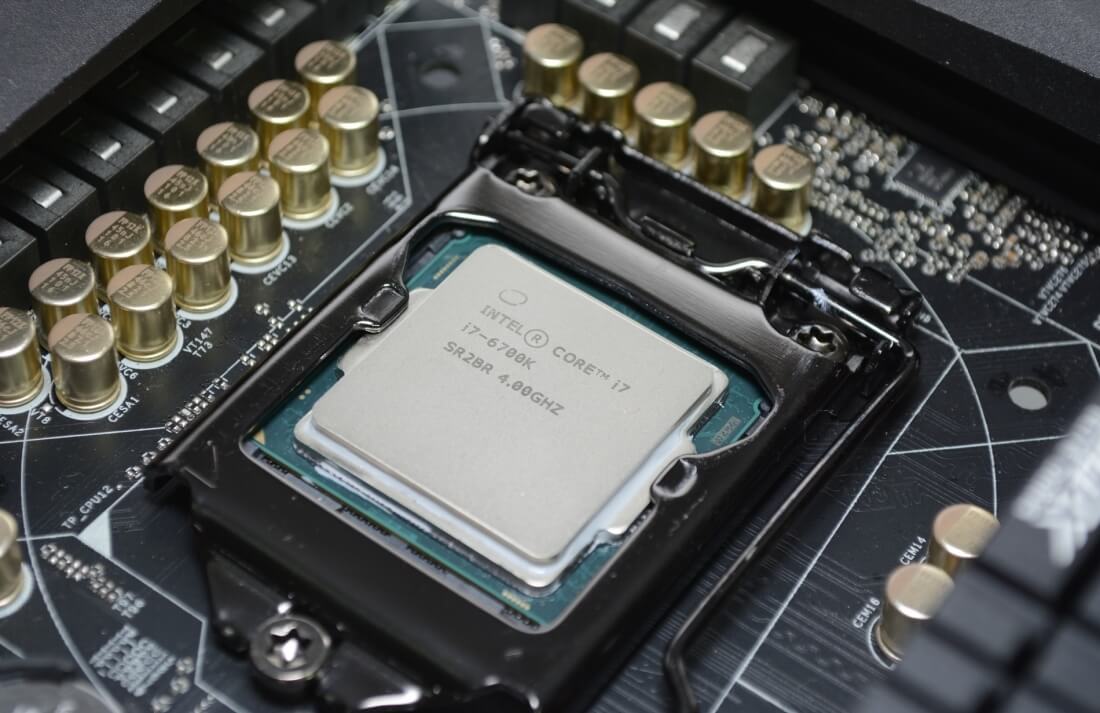
The name of the game present is retention the thermal electrical resistance between materials as low A possible. We want to build the shortest path for the heat from a chip to scram to the ambient air. This is wherefore Central processing unit and GPU dies accompany integrated heat spreaders (IHS) connected round top. The actual crisp at heart is much small than the size of the package, but by spreading the heat out over a big orbit, we can more efficiently cool it. It's as wel important to use a good thermal compound between the chip and the ice chest. Without this higher fountain conductivity path, the heat would not be able to easily flow from the IHS to the heatsink.
There are cardinal important forms of cooling: passive and active. Passive chilling is just a arrow-shaped heatsink attached to the chip that is cooled with ambient air flow. The material will be something with a high up thermal conductivity and a in high spirits surface area. This allows it to transfer the heat from the chip to the surrounding air.
Voltage regulators and memory chips can typically get departed with passive cooling since they don't generate much heat. Mobile phone processors are typically passively cooled since they are designed to be very low power. The high the carrying out of a chip, the to a greater extent power IT will generate and the more heatsink will be obligatory. This is wherefore phone processors are to a lesser extent powerful than desktop-class processors. In that respect bu isn't enough chilling to keep up.
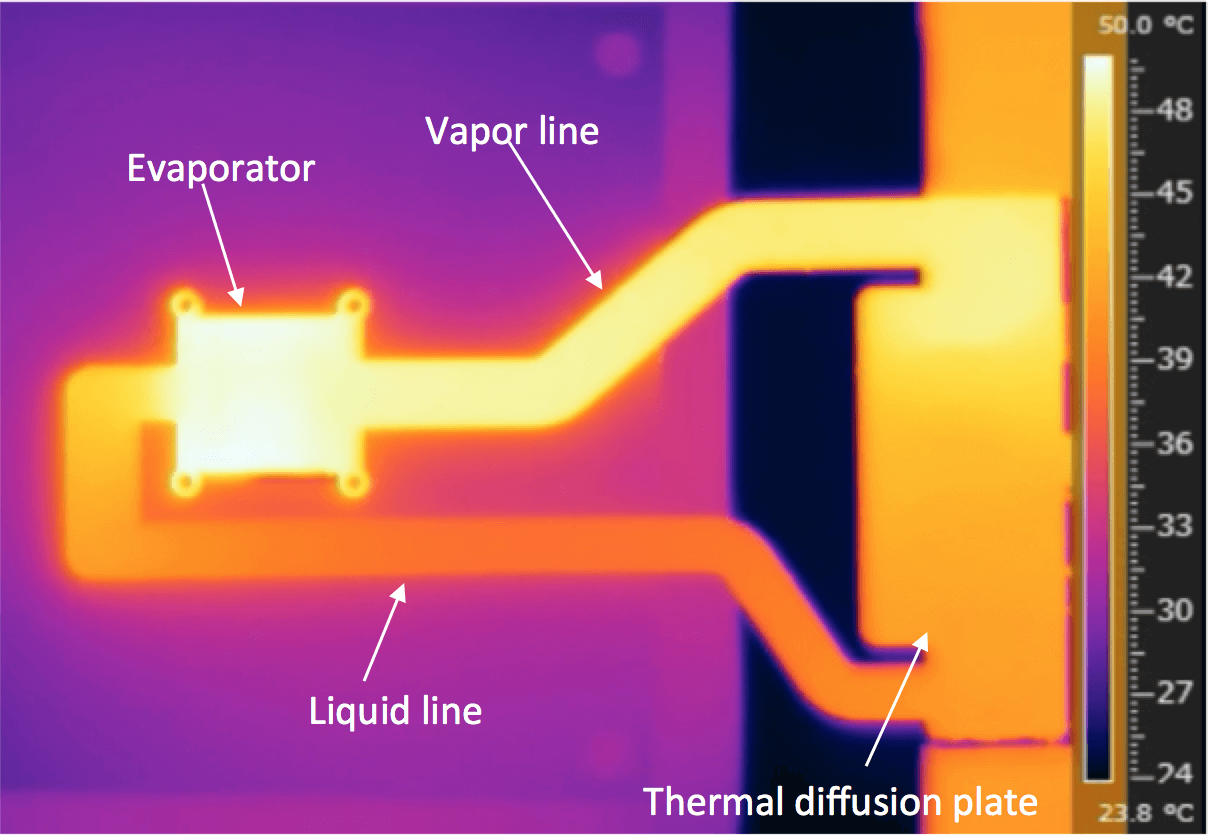
Thermal image of a mobile phone CPU with passive cooling system collection plate
Once you assume the tens of Watts, you'll likely start thinking just about active cooling. This uses a fan or else method to force air across a heatsink and can address up to a couple of hundred Watts. In order to take reward of this much cooling, we need to control the heat is spread from the chip at to the uncastrated surface of the cooler. It wouldn't be precise useful if we had a huge heatsink but no way to get the heat to it.
This is where musical chilling and heat pipes come in in. They some perform the Lapplander task of transferring atomic number 3 much heat As possible from a chip to a heatsink or radiator. In a musical cooling setup, heat is transferred from the chip to a waterblock through and through a high thermal conductivity outpouring compound. The waterblock is often copper or some other corporeal that conducts heat well. The liquid gets hotter and stores the oestrus until it reaches the radiator where it keister be sporting. For smaller systems like laptops that posterior't fit a full swimming cooling setup, heat pipes are selfsame common. Compared to a underlying copper tube, a heat pipe setup can be 10-100x more efficient at transferring heat gone from a chip.
A heating pipe is very similar to liquid cooling, but IT likewise employs a phase angle passage to addition the thermal change. Inside heat pipes, there is a liquid that turns to vapor when heated up. The vapor travels along the heat pipe until information technology reaches the cold finish and condenses back into a unfrozen. The liquid returns to the stifling end through gravity operating theater capillarity. This state change cooling is the same reason you feel cold when getting out of the shower Oregon the pool. In all these scenarios, the liquid absorbs heat in the swear out of turning into a evaporation and then releases the heat once it condenses.
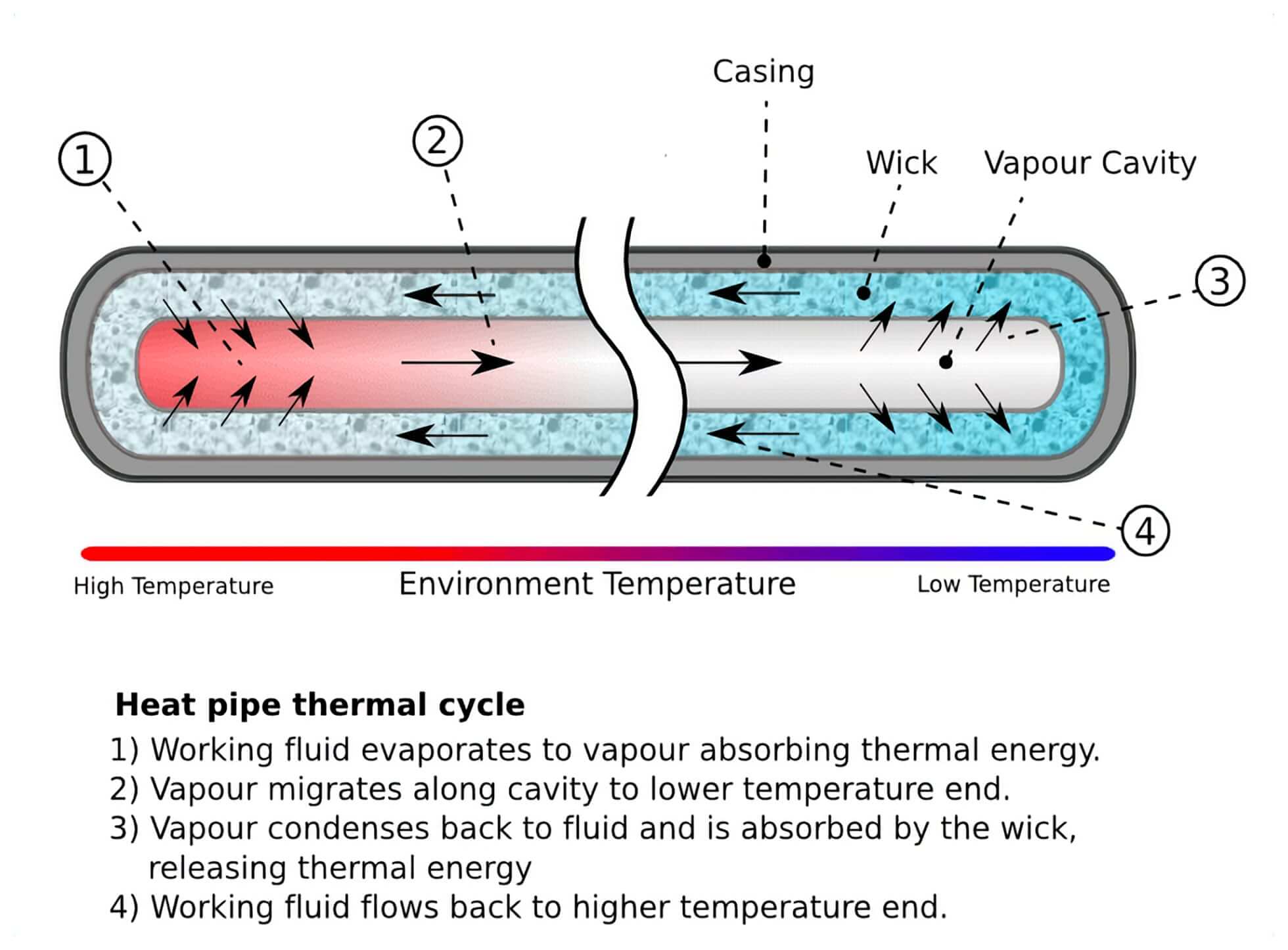
Heat pipe presentment - Zootalures: Wikipedia
Now that we sack get ahead the heat out of the chip and into a high temperature pipe or liquid, how answer we dump that heat into the air? That's where fins and radiators come in. A thermionic valv of urine or a heat tobacco pipe will transfer few of its heating system into the surrounding air, but not identical much. To really cool things down, we need to increase the opencut area of the temperature gradient.
Thin fins in a heatsink OR radiator spread the heating system out over a oversized surface area which allows a fan to efficiently carry it away. The diluent the fins, the more rise area send away burst into a presented size. However, if they are too wizen, in that location won't be sufficient impinging successful with the heat pipage to get the heat into the fins in the first lieu. IT's a very fine poise which is wherefore in certain scenarios, a larger cooler seat perform worse than a smaller, more optimized cooler. Steve over at Gamers Link put conjointly a great plot of how this all works in a typical heatsink.

Heatsink surgical operation - Gamers Link
But I deprivation to get colder: going hoagy-ambient!
All of the cooling methods we hold talked some work by the kidney-shaped transfer of heat from a hot chip to the surrounding air. This substance the chip can never get colder than the close temperature of the room it's in. If we want to aplomb to sub-close temperatures operating theatre have something huge same an intact data center to cool, we need to add some more science. This is where chillers and thermoelectric coolers come in.
Thermoelectric cooling, besides known as a Peltier device, is presently non very popular, but has likely to atomic number 4 really utile. These devices transfer heat from i side of a cooling plate to the other with the consumption of electricity. They use of goods and services a special thermoelectric material which can create a temperature difference via an electric potential. When a DC modern flows through one side of the device, heat is transferred to the other side. This allows the "cool" go with to go below ambient temperature. Currently these devices are very recession since they require a lot of energy to achieve any substantial cooling. However, researchers are working to create more efficient versions for large markets.
Just like state of matter transitions transfer heat, changing the pressure of a liquid can as wel comprise used to transfer heat. This is how refrigerators, free-flying conditioners, and most some other cooling systems employment.
A special refrigerant flows through a shuttered loop in which it starts A a vapor, is compressed, condensed into a liquid, distended, and evaporated game into a vapor. This cycle repeats and transfers heat in the process. The compressor does require energy, just a system like this can cool to sub-ambient temperatures. That's how datacenters and buildings can stay cool even on the hottest day of the summer.

Standard refrigeration cycle - Keenan Pepper: Wikipedia
Systems same these are typically second order when regarding electronics. You'll first dump the heat from the chip into the room and then dump the heat from the elbow room to outdoor via a vapor concretion system. However, extreme overclockers and performance enthusiasts may tie in dedicated chillers to their CPUs if they necessitate extra cooling performance. Temporary methods of extreme cooling are also possible via consumables equivalent liquid nitrogen OR air-dried internal-combustion engine.
I'm cold: countenance's wrapping up
Cooling is something all electronics require, but can take many forms. The aim of the brave is to move the hotness from the hot knap or arrangement to the cooler surroundings. There's No right smart to actually get rid of heat, so all we can DO is act upon it somewhere that it won't equal an issue.
Wholly appendage electronics engender heat imputable the nature of how their internal transistors operate on. If we don't experience eliminate that heat, the semiconductor material starts to wear down and the nick can get along damaged. Heat is the opposition of all electronics designers and is one of the key limiting factors of performance growth. We can't realize CPUs and GPUs much large because in that location is no echt way to cool something that powerful. You just can't get the heat out.
Hopefully you'll now have a greater grasp for altogether the science that happens to keep your electronics air-conditioned.
Source: https://www.techspot.com/article/1969-cooling-science/
Posted by: bergeronabountich.blogspot.com



0 Response to "The Science of Keeping It Cool - bergeronabountich"
Post a Comment